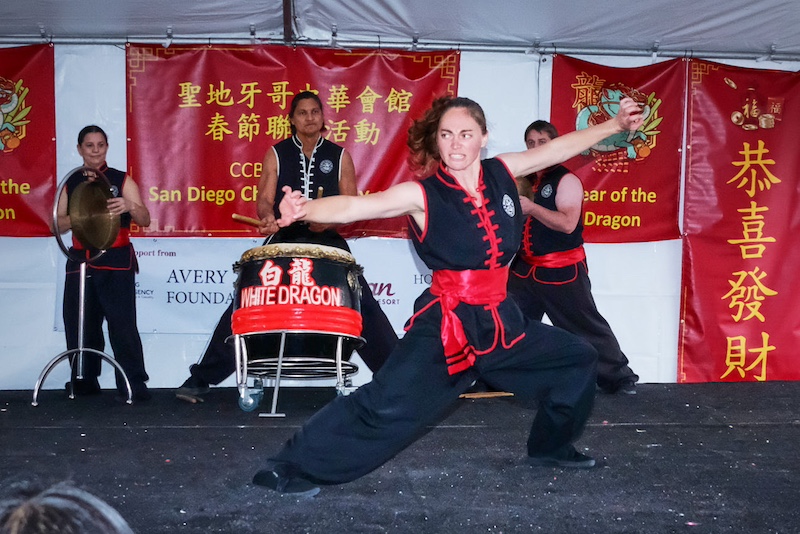A primary foundation of any martial art is the stance. Whether your style is from northern or southern China, is external or internal, stances are the basis for success. Although some believe agile footwork is more important than solid stances, if you train enough in all-around fighting, including wrestling, falling, and grappling techniques, you’ll find you still need strong, solid stances.
Kung fu’s basic stance is the horse stance. The horse stance or square stance has been traditionally used to put more power in your punches. However, if someone attacks you with a tackle or sweep, a strong stance gives you the resistance necessary to keep your balance.
Other basic stances are the bow stance and cat stance. Bow stances or forward stances are forward moving stances that place most of the weight on the front leg. Cat stances, which put the weight on the rear leg, are used to give more mobility for quick direction or technique changes.
Developing a strong stance requires traditional stance training, such as holding positions from five-to-20 minutes, starting with five and gradually building to 20. Start with the horse stance position and work toward a goal of 20 minutes. The stance should be low, with the toes facing forward and parallel to each other. Keep your knees in line with the toes. Don’t let them turn inward. Then repeat your 20 minutes while doing the bow stance. Next, stand in a cat stance posture.
Why all three? Because each involves different muscle groups. The horse stance develops even power and muscle strength in both legs. Bow stances place more stress on the front leg. Cat stances put the emphasis on the rear leg.
Once you can stand 20 minutes in each type of stance, start moving with those same stances, adding weights to your ankles. Move sideways with the square stance, stepping with the leading leg, while sliding the following leg the same direction. Step forward when doing a bow stance, again stepping with the lead leg and sliding the back leg forward.
In the old days, kung fu stylists dragged a heavy rock tied to the back leg when they practiced moving bow stances. Cat stances are moved by leading with the back foot.
With all stances, switch back and forth from one direction to the other. Practice moving and you’ll have the same strength when moving as you have standing in one spot.
A good example of the importance of stances is tai chi. The Yang Tai Chi long form should take 20 minutes. During that time the tai chi stylist stays at the same low height. The long form is the equivalent of horse stance training. The body’s weight becomes resistance training as it is carried slowly from one leg to another.
Among other internal styles, the I-chuan Hsing-I system doesn’t have any patterns or forms. However, it does use qigong (chi kung) stances or static forms to achieve the same purpose as stance training. External systems, such as Hung Gar, emphasize traditional horse stance training.
Stance training, besides strengthening the muscles in your legs, helps develop qi (chi). You must relax and be calm to hold a position for up to 20 minutes. If you are tense or lack patience you won’t be able to hold any position very long.
Besides a strong stance, martial artists also need flexibility. After each horse stance training session you should do stretching exercises to loosen any tight muscles. You can use stretching machines, partner stretches, or stretches on the ground.
The next type of footwork is quick and agile. The Choy Li Fut system has the five-wheel horse training sequence, linking different stances together in a moving sequence. Another type of footwork is called jow san ma, or running lively stance in Chinese. It links cat, bow, and square stances into quick active movements that advance, retreat, and move sideways quickly in different directions.
Martial artists need both fixed step and moving step training, much the same as yin and yang, to balance their footwork strength and agility. Strong stances without movement training are useful only for resisting people who attack you. If you want to initiate an attack, you must be able to move.
On the other hand, those with fast footwork and no stationary stance training can do punches and kicks, while being quick to attack. However, they cannot resist attackers who use the grabbing and throwing techniques of Judo, Jiu-Jitsu, or wrestling.
This article originally appeared in the March 1994 issue of Inside Kung Fu Magazine, “Training for Life” by Grandmaster Doc-Fai Wong.



